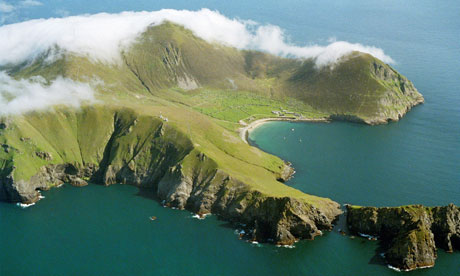The island of Soay belongs to the Archipelago of St Kilda, that also comprises the islands of Hirta, Dùn and Boreray. It is located in the Atlantic Ocean 0.31 miles (0.5 km) north-west of Hirta and 40 miles from the biggest scottish island, North Uist. With its 240 acres (99 hectares), Soay is the second largest island of the archipelago.

In St Kilda, the climate is oceanic. This means there is high humidity and high rainfall all year long, with almost 1,400 millimeters of rain falling per year. The temperature doesn’t vary much, between an average of 5.6°C (41.2°F) in winter and 11.8°C (53.2°F) in summer. It is windy most of the time.
A few people used to live in the archipelago, on Hirta mainly, between the 13th century and 1930, when the archipelago was evacuated because of rampant privation and isolation. For the next 26 years, the land was deserted by human life, except during summer when some tourists dared to visit the remote place. In January 1957, the land fell into the patrimony of the National Trust for Scotland, after the death of its owner.
It is now uninhabited (except a few months a year for scientific research) and the archipelago was awarded several titles for its preservation – such as the UNESCO World Heritage Site in 1986, the “Site of Special Scientific Interest” or the European Union “Special Protection Area”.
The interest of the controversy lies in the fact that the island of Soay is like an open air laboratory: a closed and isolated environment where no human life can interfere on the living conditions of the sheep.


